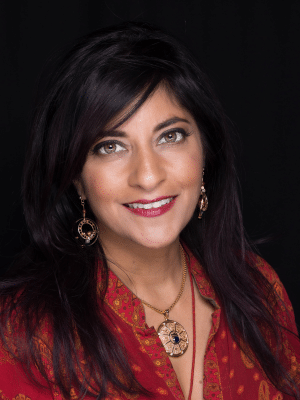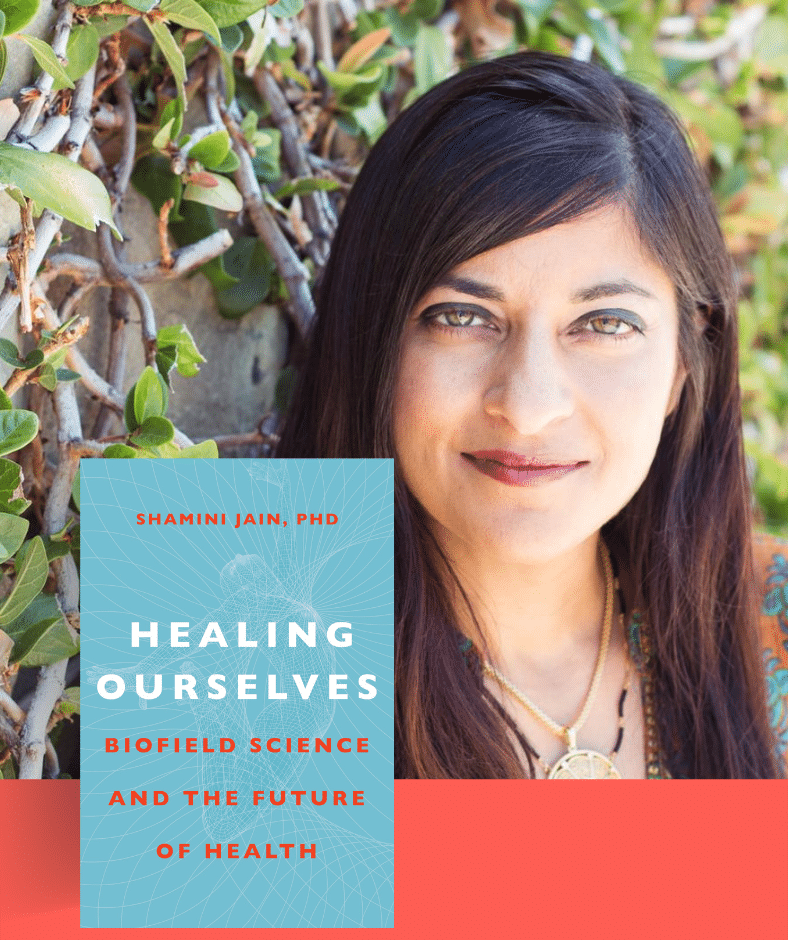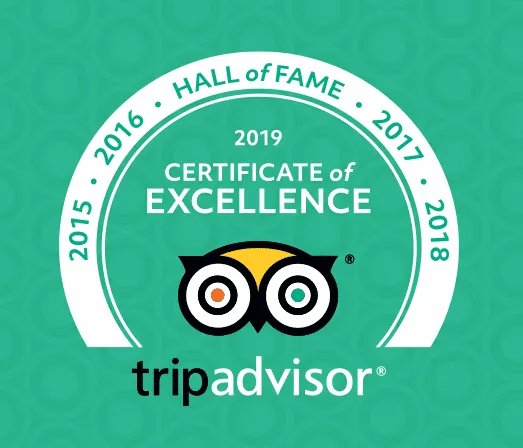Sivananda Bahamas Blog
Expand Your Horizons …
Our Blog
Healing Ourselves: An Interview with Dr. Shamini Jain
Purchase Dr. Shamini Jain's program here to gain all the benefits of her on-site Sivananda lectures and workshops in the comfort of your own home.
The Healing Keys program will help elucidate the particularities of energy work, self-healing, and the biofield while leaving you with a practical toolkit involving grounding techniques rooted in the muladhara chakra and emotional healing techniques rooted in the svadishthana chakra.
Omkari: In the workshop, you mentioned coming to a crossroads in your early years. You were torn between continuing your classical training, becoming a professional singer and going where you heart drew you: science, particularly the science of healing. Was there a specific moment that made you go down that path of healing and research on healing?
Shamini: It was my connection with sound that drove me to want to study vibration in the first place. Initially, I was feeling the power of vibration in my own body through singing, chanting mantras from an early age, singing around the house, etc. In my training as a western classical singer I learned how to use the dynamic range of the voice all the way through the entire body... this training, in combination with noticing that my voice had an effect on other people, really made me realize the untapped healing potential and great power in sound and vibration.
I often just did my own self-study. I was very enthusiastic about the exploration of sound and its healing capacities. I looked into books, the ancient scriptures, any scripture or source concerning nada yoga (the yoga of sound), and more modern interpretations as well from sound healers in the West. I actually thought I would study sound healing. Initially, that was where I was going. When I was an undergraduate at Columbia University in the early 90s, I told all my professors, I was going to study music effects on healing and music effects on sound.
Back then, to give you some context, we were just starting to learn about the brain. We were asking questions like, what part of the brain lights up when I lift my arm? We didn't talk about consciousness. Researchers were telling us that our brains didn't change after age seven, which I knew in my heart didn't make any sense whatsoever. That was the dogma that they were pushing on us.
So back then, to even say that I was going to study sound or music was crazy. Now of course, there are multibillion dollar grants from NIH looking at the effects of music on the brain. But back then it was considered crazy. So I knew that I was going to have to find professors that would support me in the research that I wanted to do and that wasn't easy. I was a research assistant for a while at Stanford University with a focus on cognitive neuroscience.
Then I had my first Reiki session.
The practitioner was completely silent. We weren't talking. She wasn't trying to lead me anywhere. She wasn't asking me any questions. We were just quiet. I felt this powerful vibration. I remember thinking: wow, I actually have a lot of pain. When she put her hands around my solar plexus, I felt incredible amounts of stagnation and pain. I had been dealing with acid reflux and all these stomach issues since I was a kid. I had always had a sense of having a problem in that area of my body but I didn't understand what was really going on, energetically, until I had that reiki session.
As the practitioner continued her work, thoughts would come to mind... I would see the patterns and places where I was holding my power. I barely knew about the chakras at that time. When I had the realization of these patterns that I needed to change, at that very moment, while this practitioner's hands were on my stomach, the energy would move.
Omkari: What did that feel like, to have the energy move?
Shamini: In the areas where I was feeling tightness or stagnation in my body, all of a sudden, there was more flow. There was a release. I couldn't explain it. I knew that it had something to do with the thoughts and emotions I was having, that there was some connection here with the energy, whether it was the tightness, the feeling of stuckness, flow, in my emotional mental state. There was nothing going on in my life that I was really focused on. I wasn't trying to take my power back or anything like that. I didn't have many problems. I had a good life. The pain, it just came up, and the recognition and then the release of that pain, it was so profound and such a strong experience.
As a scientist, I immediately wanted to answer the question, what's going on? Whatever it was, I wanted to study it, I knew that the things I had experienced could be really helpful for patients. That was my thought. So then I started digging around to see who's studying this. And I came across some seminal works. Richard Gerber, vibrational medicine, Jim Oschmann. They weren't at the university. They were really brilliant. But they weren't taking students. That's when I started my self-study on energy medicine. It was during the reiki session that I decided: I need to understand what this is, I need to study it, I need to explore whether it's helpful for patients.
So that really set me on the journey to study the biofield.
Omkari: When you chose to study the healing power of vibration and sound scientifically, you said you quit singing. You wouldn't even sing to your daughter, around the house.
Shamini: That was all due to perfectionism. My husband went through the same thing. We were both very drawn to music and both of our families said, "You can't do that, you're not going to make a living. It's not a good life." My father and I always had this back and forth. When I was eight years old, I told him, "I am going to be a singer." And he said, "No, you're not, you're going to be a doctor." And I said, "No, I'm not." Today I joke that I kind of became both.
Omkari: You worked with cancer patients as a doctor?
Shamini: As a psychologist. I went for the PhD, as opposed to the MD, which meant that I was really focused on research and doing clinical work with patients in a psychotherapeutic way. I wasn't interested in prescribing drugs. I was more interested in being a doctor of the mind than a doctor of the physical body. I've always had a fascination with consciousness, the mind, emotions. It made sense to go into clinical psychology. For that reason, I also knew that any research I wanted to do needed to be geared toward the healing of people.
Omkari: Why did you choose a more research-oriented path if you wanted the hands-on experience of healing?
Shamini: I remember talking to a faculty member when I was looking for graduate schools. She said, "Look, I know that my research has wide applicability to people and patients, but I don't really care. I study it for its own sake." A lot of academics are like that. I always felt that I was both studying healing for its own sake and for the benefit of others. At worst, I could contribute to the vast knowledge and then someone else could take that knowledge and apply it to others. We all have our roles; not everyone has to do everything.
Omkari: How would you describe the connection between creativity, wisdom, and knowledge?
Shamini: We have this unfortunate idea, the separation of creativity from intellect. Most artists in our world are struggling. In fact, creativity and intellect are really one and the same. There's the intellectual capacity, the analytical capacity, the ability to create concepts to drill down into a particular thing, or an aspect and really know it from the cognitive point of view. That's the analytical mind. The creative mind, of course, sort of expands beyond the narrow funnel of precise thinking into something that is more open. It's a different way of knowing a thing. It's connected to feeling safe. There's a kinesthetic aspect to it, there is a broader consciousness aspect to it, there's an opening to something beyond the conditioned mind. When you're creative, in the creative zone, you're channeling, you're flowing. Initially, of course, creativity is a cathartic process, you're processing emotions, you're processing your life. But then there's this shift and suddenly it's not really about you. Something else is coming through, working through you, you're just an instrument. This is where we start moving to the wisdom state.
When we combine creative knowledge with analytical knowledge, that's when you achieve wisdom. Look at the most proficient musicians. They're not just sitting there playing out of nowhere, right? They've grabbed technical knowledge, they've learned the ragas, they've learned and only then are they able to have mastery. So there's that intellectual aspect that understands how the pieces fit together. And then the openness to creative consciousness, the openness to being a co-creator. That's when one flows; when one becomes open to wisdom through the combined processes of analytical and creative knowledge.
Omkari: How would you define a healer to someone who doesn't come from spirituality, doesn't come from science? I think that when a lot of people hear this term healer, they either think of a character in a book or a woo-woo shaman. In the conventional Western world, it's hard for people to call doctors healers, because they don't see them as healers.
Shamini: A healer is essentially anyone who facilitates healing in another person. And honestly, it doesn't necessarily just mean energy or spiritual healing. It is someone that believes in what they're offering, that puts the patient first, that has a positive attitude. The healer isn't actually doing any healing, it's the person who is sick that is doing the healing, all the healer does is open up the pathways in the person's body to facilitate that healing.
Omkari: Do you have any words of wisdom for future healers?
Shamini: The time of the wounded healer is past, it doesn't work. Everyone has to do their own work. It doesn't mean that we have to be self-realized. I mean, if we are, that's great. You certainly have to be on the path, and you have to have your own practice, that's essential. Because you'll need to be able to work through your own things and know what your boundaries are when working with others. These are the prerequisites to being a healer today.
I'll just speak for myself, when I work with a patient, I will see past all of the issues, the conditions, personality, all of that, down to essentially their soul essence and their goodness. I think any healer -- doctor, healing practitioner, etc., can do this and must do it. They must tap into that so that they can hold that space of positivity, so that they can have that connection with the real self within themselves and so help bring the same out in the person they are facilitating healing in.
If you don't see the goodness in yourself, how do you expect patients to see the goodness in themselves?
Often when people are depressed or anxious, for example, they don't see their essence. They don't feel their essence. They're so bogged down in the conditioned mind, so stuck in the trauma. So the most powerful thing I think any healer can do is to tap into that place and help people by making them feel that phrase, I see you. I see who you truly are. Now it's time for you to see who you truly are. I think that's the heart of the art of being a healer. Of course, I'm a psychologist. So that's how I see it.
Omkari: Does healing have to be hands-on? Does it have to be concerned predominately with sensory input?
Shamini: It can hands-on or hands-off. I think the common factor here is the biofield. It's the energy. When you're doing healing work, whether it's hands-on or hands-off the body, you are working with the energy field. When you're working with sound in the way that we did during the workshop, you're also working with the energy field.
Yes, the senses have something to do with it. This relates more to what we what we talked about last night. One of the facets of flourishing is karma; it's vital to engage the senses in the present moment to notice and appreciate everything. I'll give you an example. Today, I was taking a bath. I was using this soap with a rose scent. And my thoughts were, "Oh, this is so divine." Something as simple as this, as just breathing in the aroma of a flower or your soap in the bathroom, it can uplift your mood in an instant. That's just one aspect of healing we can do for ourselves in any given moment. But if your mind is going crazy, you might not notice this wonderful scent. Taking care of the mind, practicing mindfulness, this is general self-healing work that we all can do. Enjoying and not being attached. That's the hard part.
Omkari: Was the path to becoming a healer easy for you?
Shamini: No, not at all. When I first started learning from Rosalynn Grenier, my healing teacher, I was very frustrated all the time. She was lovely, she had so much patience for me. I just didn't get it.
Omkari: What made it so frustrating?
Shamini: We're taught in school to show how smart we are. You want to show how I know this, I want you to know how much I know. As it gets sharpened, the analytical mind, especially in a materialist reductionist world, the analytic mind wants to judge others who are not in alignment with it. The truth is that when you have a heartfelt desire to know something, you first have to accept that you know nothing.
[Research into the biofield and healing through the biofield] has been an ongoing struggle for me because as a scientist, I'm taught to doubt. That's essentially the way science is done. I want to be very clear about this. Science doesn't prove anything. Science only disproves things. We're taught to disprove the null hypothesis, the null hypothesis is that everything is status quo. I have a hypothesis that energy healing could be effective. So I'm disproving the idea that energy healing is not effective. It doesn't mean I'm proving that energy healing is effective.
So science is based on disproving things. We're tearing things apart, looking at it, tearing apart all of the pieces, analyzing it, looking for every single other explanatory variable that could be explaining the phenomenon. But there is another way to do this. And the other way is simply to elevate the mind into a state of observation, neutral observation; this is the way we should be doing science. And this is the way we approach knowing something like energy healing.
Once I said, "Okay, clearly there are things here that I don't understand. I'm seeing things happening. I'm getting glimpses of things, I've had experiences of energy. I still don't understand it. I'm going to sit with the fact that I don't understand what she [Rosalynn Grenier] says at all. I'm going to actually rid myself of any desires to know it, to see the biofield, to have powers or any of that stuff, I'm going to release it all. Things became a lot easier, my research started to come together once I learned how to suspend the judging, doubting mind by simply coming into observation.
Omkari: What are the biggest challenges you see facing your field of research? Right now? How do you think we could help you overcome those challenges? Where do you hope to see research on the biofield in 10, 15 years?
Shamini: Well, there's a huge research gap. There's a huge knowledge gap. In general, in medicine, there's a huge knowledge practice gap, there's a 17 year knowledge-to-practice gap. So even when you do the research, this is just globally speaking, it's crazy. It takes, on average, 17 years for things to actually come into clinical practice. That's unacceptable. We know that.
Our strategy at the Consciousness and Healing Initiative (CHI) is to move forth both vectors, bring healing into healthcare and bring healing into self-care. The biggest challenges, honestly, revolve around funding. The National Institute of Health and most of the national agencies where you would apply for grants still think this is crazy, they still think energy is crazy, they still think the biofield isn't real.
We're looking into crowdfunding certain studies, so that everyone can just sort of pitch in and throw in a few bucks and make a tax deductible donation and help move the research forward. That's how our research has been done so far, through private foundations and private donors and crowdsourcing to some degree. So that's definitely a way. The other is for people to share what we know, on our nonprofit website, we have many, many resources. We have free webinars. If you go to reportonhealing.com, you'll see we did a deep dive into the field exploring questions such as: What do we know? Is there really science behind energy healing? Is it placebo? How many healers are there?
So, for people that are trying to explain to folks the science behind [energy healing and the biofield], there are studies that have been done, we have lots of free resources for practitioners. As a practitioner you don't have to know everything about every single study, you can just hand someone the report and say here, here's everything you wanted to know about the science behind this. These are the resources that exist to help the public. And people can help the biofield, can help the research, by sharing these resources freely with everyone. By sharing the resources with others, it will help everyone get on the same page, it will help demystify energy healing, it will discourage the idea that this isn't real.
In terms of the future, there needs to be significant investment in this field so that we can educate others and help them incorporate an understanding of the biofield into their self-care; if we succeed in this, people will be able to sense their own energy and use it for their own self-healing. There's really a potential breakthrough for medical technology here because if we can, if we can reliably measure the energy field, and we can detect disease before it manifests in the physical body... Such technology could be a huge boon for preventing chronic disease.
All of the ancient texts are clear: you see disturbances in the energy field before you see disturbances in the physical body. Can you imagine? If we could potentially detect cancer in the energy field before it appeared in the physical body? There are people exploring that right now, looking at bio-photon emission from the fingers, seeing if they can see something about a person's state of health. But there has to be significant investment in those technologies and a certain level of faith in the ancient wisdom for the research to move forward and deliver all of its great benefits to us.
Want to learn more about Shamini Jain's incredible research, join a growing community of healers, and discover the intricacies of the biofield?
Visit the Consciousness and Healing Initiative (CHI) at http://www.chi.is

Dr. Shamini Jain is Founder and President of the 501c3 social-profit, Consciousness and Healing Initiative (CHI), an international collaborative of scientists, healing practitioners, educators and artists who lead humanity to heal ourselves. She also serves as an adjunct professor at UC San Diego’s Department of Family Medicine, where she supports whole health education within UCSD’s Centers for Integrative Health. Dr. Jain is a clinical psychologist, and an award-winning researcher and author in psychoneuroimmunology, integrative health and biofield science. Dr. Jain is a sought-after speaker and teacher with ample media experience related to biofield healing research and education, including national television placements, two TEDx talks, and regular talks at universities as well as leading health conferences and retreat centers. Her two-time award winning book, Healing Ourselves: Biofield Science and the Future of Health is available from booksellers world-wide. Shamini is also a singer with a background in bel canto and musical theater, rock, metal and mantra. Her breakthrough debut album, “Kaliyuga Blues”, can be found on your favorite music streaming platform.
Upcoming Courses
Learn how to fully embody healing and powerful transformation through one of your most powerful assets - your voice. Through experiencing the impact of creative sound-making, mantra, spoken word and poetry, you’ll reach beyond your fears and conditioned limitations to bring forth a new reality of joy for yourself and others.
Through deep learning and experiential group practice, you are invited to expand the boundaries of what you think is possible for personal and collective healing. Come learn about the scientific evidence supporting the power of energy-healing practices — along with approachable techniques for application.
Become your most inspirational and co-creative self, and bring forth the Divine Feminine in your fullest expression!








